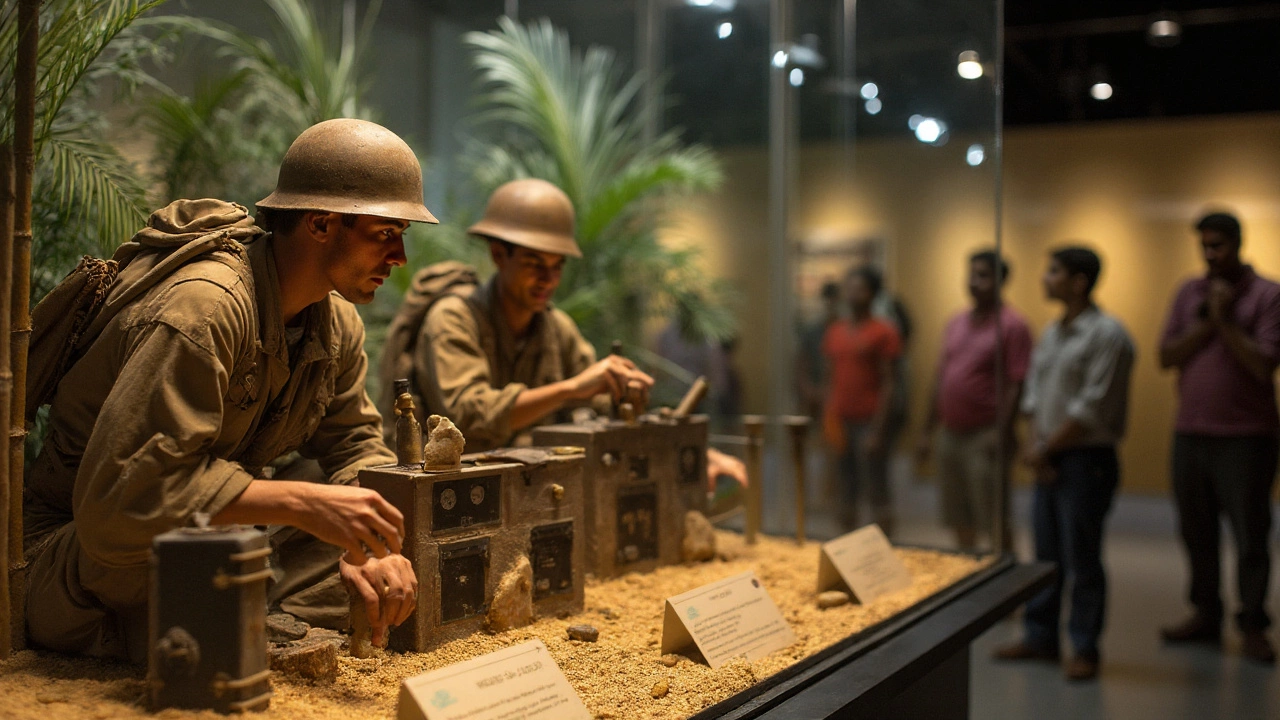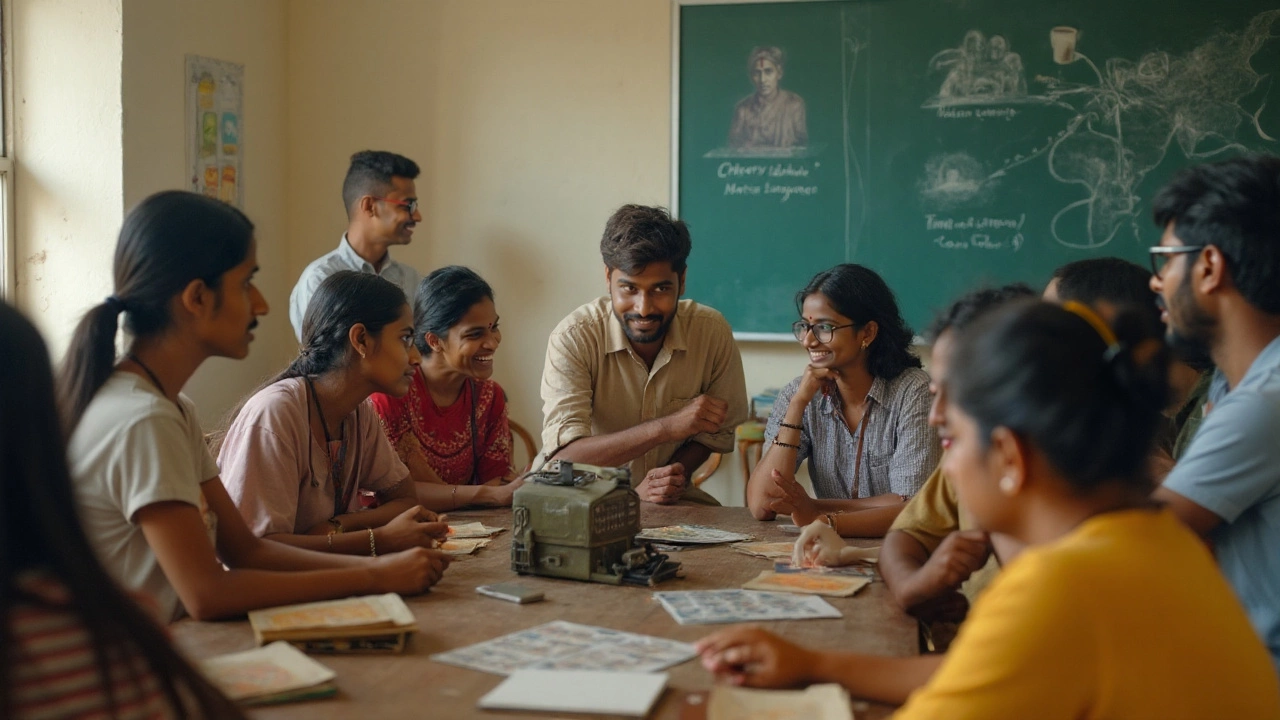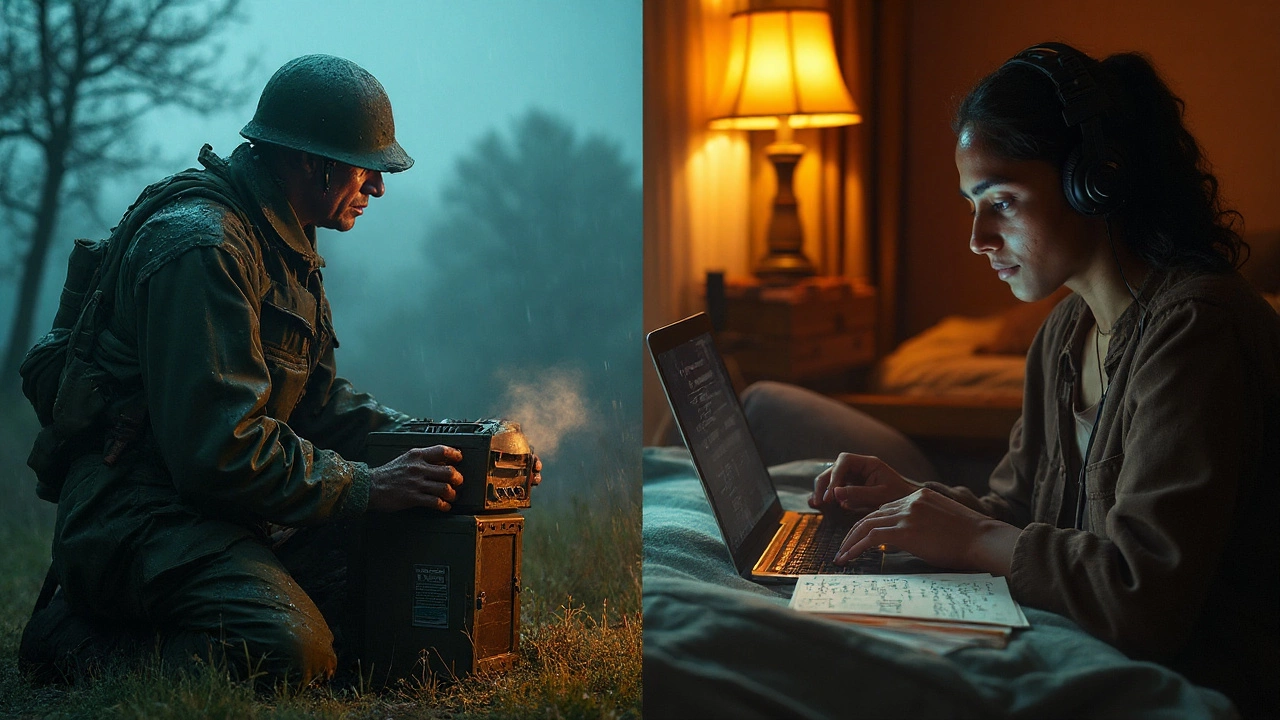
Picture a radio message that sounded like a normal conversation yet left enemy codebreakers completely lost. That’s the heart of what people mean by an Indian code talker. If you clicked for a crisp answer, here’s what you’ll get: a clear definition, how code talking worked, which tribes used it, why it changed the course of battles in both World Wars, and how to talk about it with the right terms and respect. I’ll also flag common myths so you don’t repeat them in class, on social, or at the dinner table.
- TL;DR: “Indian code talker” refers to Native American service members who used Indigenous languages to send secure military messages in WWI and WWII.
- Key tribes include Navajo (Diné), Choctaw, Comanche, Cherokee, Hopi, Meskwaki, Seminole, Lakota/Dakota/Nakota, and others.
- Why it worked: speed + rarity of the languages + trained code systems. Navajo radio messages could be sent and decoded in seconds, not hours.
- Terminology: In U.S. history, “American Indian” appears in laws. Today, many prefer “Native American,” “Indigenous,” or the specific nation (e.g., Diné).
- Impact: Their codes were never broken by enemy forces, according to the U.S. Marine Corps and the National WWII Museum.
What an Indian Code Talker Is-and Why the Term Exists
When people say “Indian code talker,” they almost always mean Native American code talkers from the United States. The term “Indian” sticks around because it appears in early 20th-century military writing and later U.S. laws. In everyday use now, it’s better to say “Native American code talkers,” or name the nation directly-Navajo (Diné), Choctaw, Comanche, and so on. If you’re quoting a historic document, keep the original phrasing; if you’re writing new content, default to today’s respectful language.
So what is an Indian code talker? A trained Native American service member who used an Indigenous language-sometimes adapted into a formal code-to send military messages fast and securely over radios and field telephones. Their work began in World War I (1918, with Choctaw, Cherokee, and others) and expanded in World War II, most famously with the Navajo in the Pacific and Comanche in the European theater.
Why languages? Two reasons. First, most enemies didn’t know these languages, and there were few dictionaries or fluent non-Native speakers. Second, the military didn’t just lean on language alone. Many teams built codebooks (memorized, not carried into battle) that assigned Navajo words to letters or to specific military terms-so even a fluent listener would still face an extra layer of abstraction.
Here’s the quick timeline you can trust:
- World War I (1918): The U.S. Army uses Choctaw and other Native languages to coordinate movements. This proves the concept.
- Interwar years: Veterans and officers remember what worked.
- World War II (1942-45): The U.S. Marine Corps fields Navajo Code Talkers in the Pacific; the U.S. Army fields Comanche and others in Europe and beyond. The system scales.
- 1968: The Navajo program is declassified, opening the story to the public.
- 2000-2001: Congress authorizes and awards medals to Navajo Code Talkers (gold to the original 29; silver to other WWII Navajo code talkers).
- 2008: The Code Talkers Recognition Act honors code talkers from at least 33 tribes with Congressional Gold Medals (awarded collectively by tribe).
I remember rereading a Marine’s account while my cat, Luna, pawed at my notes. The detail that stuck: these weren’t just “mystery words.” The brilliance was in how the teams organized and trained-so messages moved at the speed of a firefight without breaking under pressure.

How Code Talking Worked (Step-by-Step), With Realistic Examples
A good way to see the craft is to walk through a message in the Pacific Theater. You’ve got a Marine forward observer taking fire on a volcanic ridge. He needs to report enemy armor and call in artillery. He speaks into a radio handset to a fellow Navajo code talker on a ship offshore.
- Assign trained operators: Each unit fields bilingual code talkers paired to radios and command posts.
- Encode on the fly: The sender converts the message into the agreed Navajo (or other Native language) word list. This might be a letter-by-letter spell-out (using multiple Navajo words that map to letters, with alternates to prevent patterns) or a direct term (e.g., a Navajo term that the codebook maps to “submarine”).
- Transmit fast: The code talker speaks the words clearly over the radio. No machine required-just training and a sharp memory.
- Receive and decode: The second code talker hears the Navajo words and instantly maps them back to English letters and terms, writing the tactical message for the commander.
- Act immediately: Artillery, air support, or troop movements kick off-often within seconds of the original call.
- Keep it safe: No codebooks in the field; everything critical is memorized. If captured, there’s nothing physical to steal.
To get a feel for the creativity: instead of saying the English word “submarine,” a Navajo code talker would say words that translate to “iron” + “fish,” a poetic and practical stand-in that the codebook linked to “submarine.” For letters, the original Navajo system included multiple Navajo words for each English letter-think “ant,” “apple,” and “axe” for the letter A-so repeated letters didn’t create obvious patterns. That blend of linguistic rarity, flexible synonyms, and memorized mappings made the system hard to crack and lightning fast to use.
Speed mattered. The National WWII Museum has noted that messages which could take hours by conventional cryptography moved in under a minute by Navajo voice code. In live combat, minutes mean territory, casualties, and survival.
“Were it not for the Navajos, the Marines would never have taken Iwo Jima.” - Major Howard Connor, U.S. Marine Corps, signal officer, 5th Marine Division (1945 testimony)
The security also held. According to the U.S. Marine Corps and postwar assessments, enemy forces never broke the Navajo voice code in WWII. That doesn’t mean the system was simple. It took rigorous training, constant practice, and disciplined radio work, often under fire. The code talkers were soldiers and Marines first-hauling gear, digging in, and moving with their units. The code was a tool they carried in their heads.
One more thing people miss: code talking wasn’t just a Marine Corps story. The Army fielded code talkers too. Comanche radio operators landing on D-Day used their language to mask plans and coordinates on beaches crawling with German intercept units. In North Africa, Meskwaki soldiers did similar work long before the public ever heard about it. Different theaters, different languages, same core idea-secure radio by smart human design.
Practical takeaways you can use in a project or a classroom:
- It’s not “they just spoke Navajo and no one knew it.” It’s “they built and memorized a code system that used Navajo words in precise, repeatable ways.”
- They aimed for speed as much as secrecy-voice beats paperwork when shells are falling.
- No codebooks in the foxhole. Memory and teamwork carried the day.
- Multiple tribes served. Don’t make it a single-tribe story.

Tribes, Numbers, Recognition-and How to Learn More
You’ll see the Navajo front and center because the Marine Corps program was the largest and most visible after declassification. But the story is broader. Below is a compact snapshot, using commonly cited figures from museum exhibits, the National Archives, and tribal histories. Numbers are best-effort estimates; exact rosters varied by unit and record-keeping.
| Tribe/Nation (Language) | Branch & Theater | Approx. Code Talkers | Conflict | Notes |
|---|---|---|---|---|
| Navajo (Diné) | U.S. Marine Corps, Pacific | 400+ (29 original developers) | WWII | Formal code using Navajo; declassified 1968. |
| Choctaw | U.S. Army, Western Front | ~19 | WWI | Earliest organized U.S. use (1918). |
| Comanche | U.S. Army, European Theater | ~14 | WWII | Notable at D-Day with 4th Infantry Division. |
| Cherokee | U.S. Army | 6+ | WWI | Used Cherokee for secure phone/radio. |
| Meskwaki (Sac & Fox) | U.S. Army, North Africa | ~8 | WWII | Iowa enlistees used Meskwaki in field ops. |
| Hopi | U.S. Army, Pacific | 10+ | WWII | Served as radio operators/code talkers. |
| Lakota/Dakota/Nakota (Sioux) | U.S. Army | n/a | WWII | Recognized under 2008 Act. |
| Seminole | U.S. Army | n/a | WWII | Recognized under 2008 Act. |
| Chippewa-Oneida | U.S. Army | n/a | WWII | Recognized under 2008 Act. |
Recognition came late. The Navajo program stayed classified until 1968. In 2001, the original 29 Navajo Code Talkers received Congressional Gold Medals; other WWII Navajo code talkers received Silver Medals. In 2008, the Code Talkers Recognition Act extended Congressional Gold Medals (by tribe) to all Native American code talker groups that served in WWI and WWII. The Smithsonian’s National Museum of the American Indian, the National WWII Museum, and the National Archives have featured exhibits and collections that verify the service, the signal logs, and training materials.
Quick cheat-sheet you can copy into your notes:
- Definition: Trained Native American radio/telephone operators using an Indigenous language-based code system.
- When: WWI (1918) and WWII (1942-45).
- Why it worked: Rare languages + structured code + memorization + speed.
- Famous quote: Major Howard Connor on Iwo Jima’s success.
- Ethical language: Use “Native American” or the nation’s name; keep “Indian” when quoting historical sources or laws.
Pitfalls to avoid:
- Don’t say “they just spoke their language.” They used organized code lists and methods.
- Don’t make it only a Navajo story. Acknowledge WWI Choctaw and other WWII teams.
- Don’t bring the codebook into the field in your timeline or script-operators memorized it.
- Don’t round numbers into fiction. If a source says “about 400,” keep the “about.”
Mini‑FAQ (the questions you’re probably about to Google):
- Does “Indian code talker” mean someone from India? No. It’s a U.S. historical term for Native American code talkers. If you mean people from India, say “Indian” with a clear context like “Indian Army” or “India-based.”
- Were the codes ever broken? No, not in WWII. U.S. Marine Corps sources and postwar analyses state enemy forces did not break the Navajo voice code.
- Why Navajo for the Marines? The language’s complexity, the number of fluent bilingual speakers, and the ease of fielding teams made it practical. Plus, the code they built on top of Navajo optimized for speed.
- Who started it all? Choctaw soldiers in 1918 are often cited as the first organized U.S. use of Native language for secure communications.
- How many tribes took part? At least 33 tribes were recognized by Congress in 2008 for code talking in WWI/WWII.
- Are any code talkers still alive in 2025? Only a few WWII code talkers remain; the last of the original 29 Navajo developers passed away in 2014 (Chester Nez). Tribes and museums sometimes share updates on living veterans.
- Is there a definitive source? For primary material, look to the National Archives, the U.S. Marine Corps History Division, the Smithsonian’s National Museum of the American Indian, and the National WWII Museum.
If you’re a student: build your outline around “who, how, why it worked, impact, legacy.” Drop in one case study (Iwo Jima for Navajo, D‑Day for Comanche) and one primary-source quote.
If you’re a teacher: have students practice turning a plain English message (“Enemy armor at grid XYZ; need smoke on ridge”) into a mock coded message using a simple substitution and a two-step “term list.” It shows why speed and structure matter.
If you’re writing for social: be specific. Name the tribe and the battle. Keep numbers honest. Tag museum accounts that share primary sources.
If you’re doing family research: check tribal veterans’ offices, the National Archives (service records), and museum oral histories. Expect gaps-some records were sparse, and secrecy outlived the war for decades.
Want to go deeper without drowning in tabs?
- Search for “Navajo Code Talkers declassified 1968” to find reproduced code pages and training notes in museum collections.
- Look up the Code Talkers Recognition Act of 2008 (Public Law 110‑420) to see the list of recognized tribes.
- Browse the National WWII Museum and the Smithsonian NMAI for exhibit pages and oral histories tied to specific battles.
Here’s a simple decision rule you can keep:
- If you’re quoting or summarizing a historical law or document, it’s fine to use “American Indian/Indian” as it appears.
- If you’re writing fresh copy, prefer “Native American code talker” or, better, the specific nation’s name.
This topic packs a lot into a few words. It’s strategy, language, and courage woven together on noisy radios in the worst possible conditions. And yes, it still holds up to scrutiny. The museums, the Marine Corps histories, and the Congressional record line up: the system worked, and it made a measurable difference on the ground. If you keep your terms clear and your examples concrete, your readers will get it fast-and remember it.